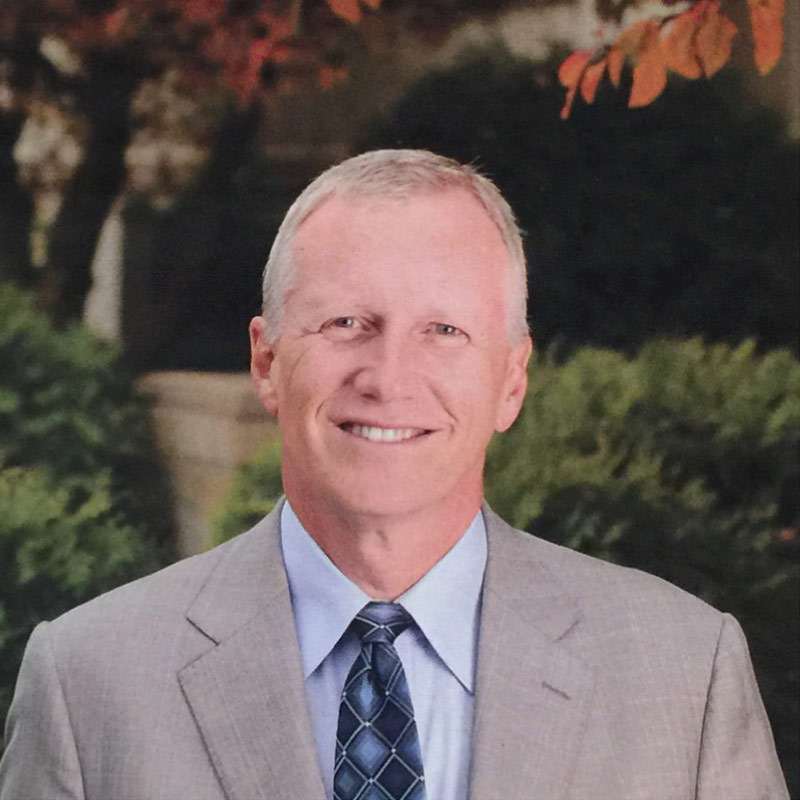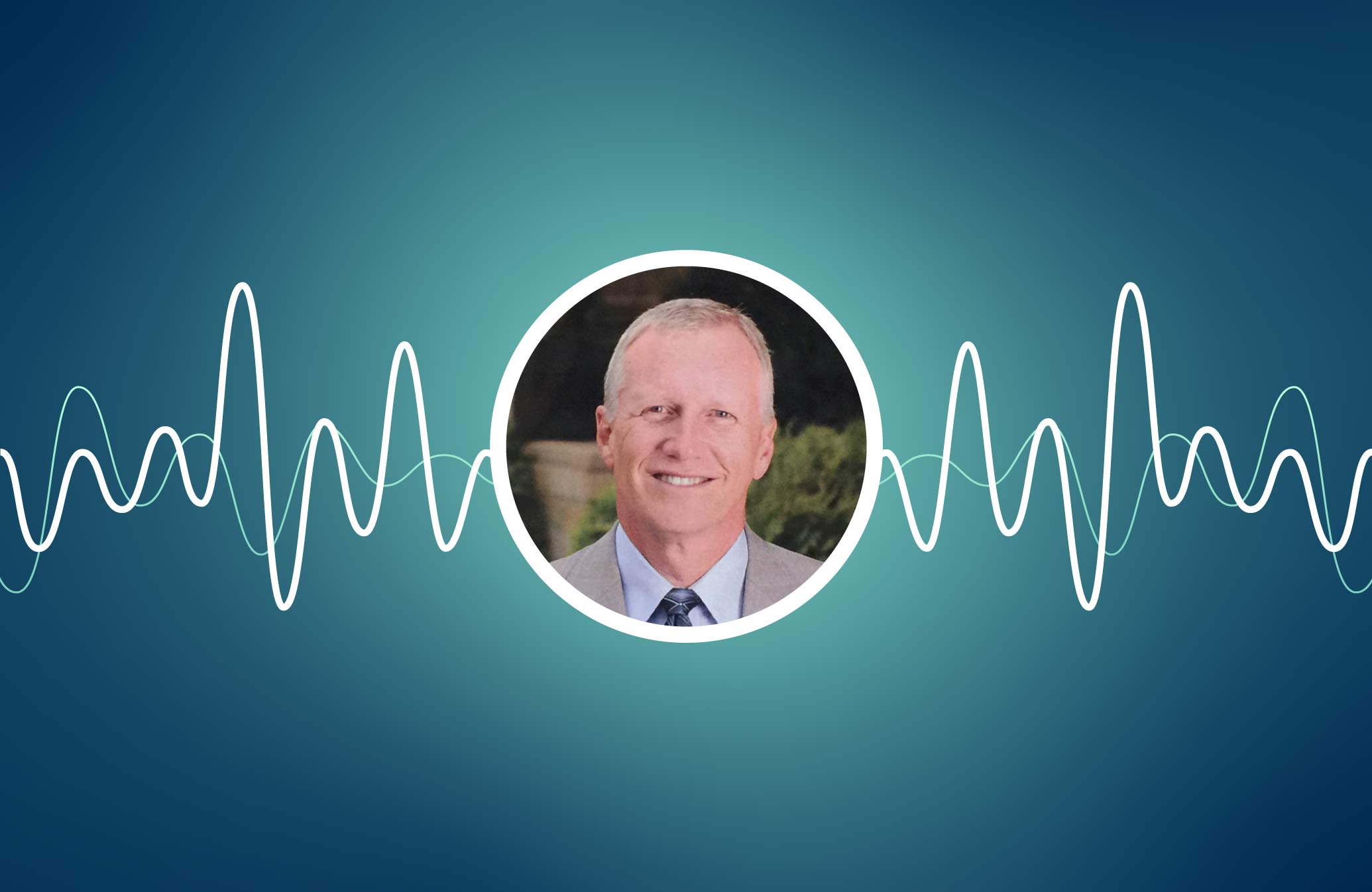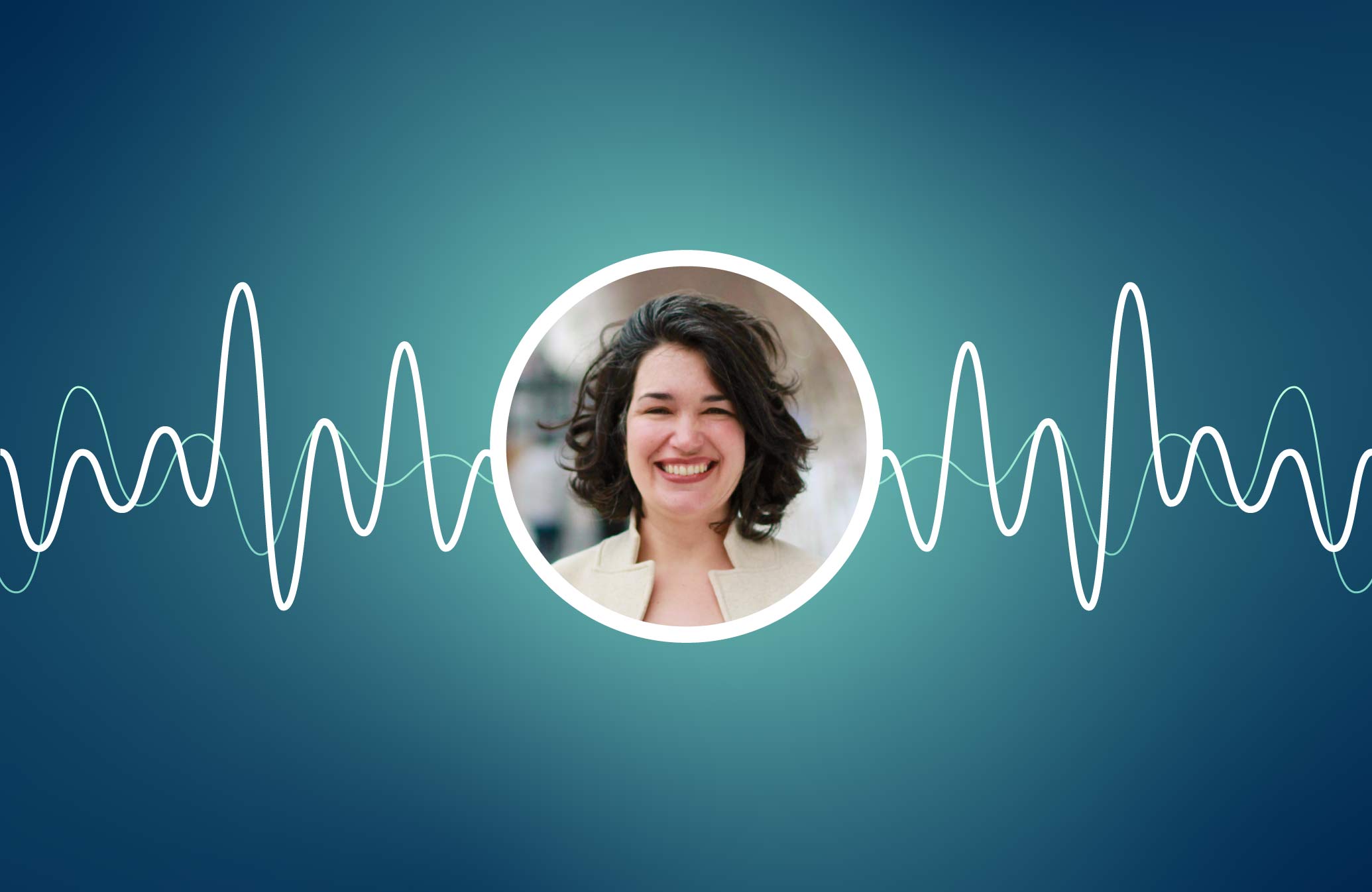Listen Now
Episode Transcript
Announcer [00:00:00] Welcome to RadioRev, podcasting from the heart of healthcare in Minneapolis, Minnesota. This is the podcast for change makers looking to do more than just health engagement. It’s about getting people to take action and do things that actually improve their health. It’s a radical idea, right? So we’re talking with the leaders, innovators, movers, and shakers who are bringing new ideas, inspiring others, and leading the way.
Jenn [00:00:26] Welcome to another episode of RadioRev. I’m Jenn Dellwo. Visiting the emergency department for non-emergencies and other minor ailments is a common occurrence. In fact, studies report that upwards of 60% of emergency department visits among patients are potentially unnecessary and could be avoided entirely. One of Icario’s health system clients had a goal to bring down rates of those using the emergency department in lieu of visiting a primary care physician and partnered with Icario to bring the program to life. Today, Jeff Fritz is talking with Dr. Kevin Croston about the initial results of North Memorial’s ED mitigation program. Welcome to the show.
Jeff [00:01:02] Hi Dr. Croston.
Dr. Croston [00:01:04] How are you, Jeff?
Jeff [00:01:06] Doing great. How’s it going for you?
Dr. Croston [00:01:08] Pretty good today. Thanks.
Jeff [00:01:10] Good. Well, I know you’re an emergency room veteran, and now you’re the CEO of North Memorial, which I think is considered more and more an innovation center in the Midwest for healthcare systems. So this is probably a topic near and dear to your heart?
Dr. Croston [00:01:29] It is. Obviously, we have—we live in a neighborhood that has an impoverished record, and we have a lot of emergency use that’s inappropriate. And we take on a lot of capitated/light products to manage those folks. And so obviously, that drove us to take a good, hard look at the problem as described.
Jeff [00:01:55] So before we begin, we like to just do a quick ’80s question. It helps us with our bumper music. What’s your favorite ’80s song if you have one?
Dr. Croston [00:02:07] Yeah, well, you know as we talked a little beforehand, that was kind of a dark decade for me because I was a surgery resident working 120 hours a week. But a song that stuck with me was Bon Jovi’s “Livin’ on a Prayer.” So I guess you can take that. That seems like what the healthcare systems of this country are doing currently. {music plays}
Jeff [00:02:36] That’s a good one. And I think when you’re in the emergency room and the craziness that goes with taking care of patients in that environment, sometimes you might feel like even the physicians are living on a prayer.
Dr. Croston [00:02:50] Yeah, I think that’s right. I think it’s a great song for them.
Jeff [00:02:55] So can you explain for everybody the genesis of this program? What were some of the factors that led to your decision to try and create a program that encouraged more people to visit a primary care clinic versus a return to the emergency department?
Dr. Croston [00:03:14] Yeah. That’s no problem. I think a couple of things there. There’s nothing about an emergency room visit that’s good. Now, I say that when you really, really need an emergency room, when you’re really, really injured or really, really sick, and your world is spinning around you, that’s a great place for that. But what has evolved over the last decades has been it’s a place where you can go and get care because it’s open 24/7. It’s convenient, and you get an answer for the most part. You go in there, see somebody, and the answer typically isn’t, “Well, we’ll send you down the road to see this person and this person and this person,” which sometimes happens in primary care clinics. But with the financials that surround healthcare, with all the conversations around controlling costs, about the worst place for value for your care is an emergency room. And value, again, is the amount of cost it takes to achieve outcomes that are desirable. It’s a really expensive place. You’re starting from scratch every time you come in. And the bottom line is that primary care has got to be the cornerstone of our future healthcare system. We have to have people that have a relationship with somebody that knows them, knows how to handle their problems and where we have access to their records when they’re not available. So the electronic health record has been a good step in that direction. But people need preventative and health and wellness care before they arrive in an emergency room. And so our goal has been to try to reduce the number of visits to an ER that are inappropriate. So, number one, if it’s something that can wait till morning, do that, and then call the office and come in then. Or for those that don’t have an emergency room physician, how can we get them to go—or excuse me, a primary care physician—how can we get them to actually take the time to make the appointment and go on and establish the relationship? There’s a group of people that use the emergency room religiously. And just to put a little number around the scope of the problem, at one point we looked at how we were going to try to reduce emergency room visits, and we said, “Well, let’s try to figure out how many people, whatever frequency they come.” And we tried to stratify our visits, and at a place where we have 70,000 visits a year, down to more than 10 visits on an annual basis in order to make the numbers actually work. The numbers were so huge, so many people use the ER that much that we couldn’t go lower. So it’s kind of alarming when you think of it that way. So that’s the scope of the problem. So the goal now is how do we try to reduce the use of emergency rooms for what could be considered inappropriate use on a regular basis? And that’s why we approached Icario.
Jeff [00:05:47] So maybe you can share with me the North Memorial experience compared to other providers around the country. What are you guys seeing as overall trends? And maybe tell us a little bit about how North is situated in the overall ecosystem?
Dr. Croston [00:06:05] Yeah. So North Memorial Health is about a billion-dollar healthcare system, which makes us really, really small in the big healthcare world. And we’re the smallest system in the Twin—or one of the smaller systems, if not the smallest system—in the Twin Cities. We’re positioned in the northwest part of the metro area and out. We’re a two-hospital system. We have about 25 ambulatory sites, and we have 125 ambulances that are stationed all over Minnesota and western Wisconsin. And we have nine helicopters that work out of seven bases and cover the entire state of Minnesota, again, and western Wisconsin. So we have a large greater Minnesota presence, as well as a local metro presence. We’re an emergency-based company for… historically we were one of the first places that hired only emergency residency-trained physicians to our emergency room. And because of our ambulance outreach, we have a lot of that sort of mentality. We’re a Level I trauma center, a comprehensive stroke center. We are one of the best players in town on the STEMI projects, getting people in there that are having chest pain. But we also do all the other things. We have an outstanding cancer clinic, and our location butts up against an economically challenged part of Minneapolis. And so we have a fair amount of care in the Medicaid population as well as indigent care that we don’t get compensated for. But we are a community-based resource, and so we do the best we can to deal with that. A lot of those folks, as you can imagine, arrive without a healthcare provider that they’ve got in their box because it’s hard for them to get there. And that’s the group that we specifically need help addressing, because those are the ones most in need of preventative care, if it’s at all possible.
Jeff [00:07:56] Got it. And then just to connect it with Icario, I know that outside of the conversations that you and I’ve had over time, what was the one thing that stood out that you guys said, “OK, let’s give this program a go with Icario?”
Dr. Croston [00:08:15] Well, Icario clearly had done this work on a much bigger scale than we are able to do. And so one of the things is how do you connect with your patients in a way to meaningfully provide them enough opportunity to do care a different way so that we can get them to not necessarily think of the emergency room? First thing right off the top, Icario’s had a history of doing big projects with some of the payers. We needed to be able to reach out and connect, and we don’t have the infrastructure to do all of that. So we were glad to bring them on board and help us with this problem. And I think the first step was let’s figure out the best way to do it. And your company had really good insights into that.
Jeff [00:08:57] Did you have any overall goals for the first phase besides just let’s reduce ER visits over time?
Dr. Croston [00:09:06] Well, I think there’s two parts to it. We wanted to reduce ER visits, but we wanted to do that by getting them to actually make an appointment with a primary care physician. So it’s one thing to just get them to not come. It’s another thing to actually seek out the care that they need to stay healthy. And we wanted to do both. So the goal was to take—when we first started looking at this, was to look back retrospectively at the 12 months prior to this, and everybody that came through our emergency room that did not identify that they had a primary care provider, go back a long—a year out, as far as a year out, and contact them and see if we could help them make an appointment to see somebody in a preventative way or as a wellness visit after that. The goal would be, again, to get in front of them, to try to help manage their problems before they arrive in the emergency room and see where it goes. And the good news is, we didn’t know the best way that we were going to get to them, but we had to bring in Icario, our Icario partner here, to try to help us identify what was going to be the most effective way to communicate to these folks and get the message to them, and then hopefully we would see an improvement in our group that actually registers in our primary care clinics.
Jeff [00:10:16] So what I think was new, was this idea of trying to personalize the outreach to have the combination of message type—so are we going after a value-based message or a lifestyle or a health-based message—and the combination of are we going to reach out to them via text or email or some kind of voice technology and map those into each person as best we can with the data that we have to make it more and more personalized. Did you have any preconceived ideas of which channel might be more effective or how we reached out to those? Did you have any guesses?
Dr. Croston [00:11:11] Yeah, it’s interesting. First of all, thank you for framing it a little better, because that’s why we hired you guys. You have a good concept of what we’re trying to do here. So I completely agree. I would tell you my bias was that the elderly people wouldn’t be reachable by cell phone, that they would be still somebody we’d have to call at home or do something else and that a text message wouldn’t resonate with them, whereas the opposite might be true with a younger crowd. Turns out I was wrong about that, but that’s what we were thinking at the time. You just don’t know. It shows you that you don’t always know where it’s going to go.
Jeff [00:11:44] So some of the ‘aha’ moments that I think for us…the same was true that even to a greater extent than we anticipated, text messaging was surprisingly effective no matter what the age was, and there was actually an appetite that if we texted them one or two more times to get them to take the action, we did not have people opting out of getting a text message. Rather, we just had a higher percentage of people completing the task of scheduling an appointment, which was really, really interesting to us. And that carried our learnings into the continuous program that we have coming on next. Are there any new challenges that you felt needed to be addressed going forward with the next phase? When you’re thinking about, “OK, we’re going to mainstream this thing now,” and each time somebody goes to the emergency room, we’re going to try and contact them and get them scheduled for a follow-on appointment?
Dr. Croston [00:12:45] Well, I think to your point, we actually went back up to a year before on the first phase of this whole thing, and it’s out of sight, out of mind for folks 12 months down the road. And we still generated over an 8% increase in appointments made with primary care, which I think is quite remarkable, using data. So going forward, I kind of liken what you guys do to having a digital mother, which I thought was kind of funny. You were able to bug people enough where they actually made the appointment, and they didn’t seem to get mad when you texted them over and over, which I thought was fascinating. So congratulations on that, Jeff. You must have a very maternal side that I wasn’t aware of before.
Dr. Croston [00:13:25] I have my mom doing all of the voice recordings and the writing.
Dr. Croston [00:13:29] Oh, that’s good. Well, whatever, it worked!
Dr. Croston [00:13:33] And the hope is that we get people that use the ER, and there’s an educational opportunity now on this continuous program. We get to them shortly after the visit, and we teach them there’s another way to have gone about this because there’s nothing great about the emergency room when you go in there. No matter where you go, you wait. You’re not at the top of the priority list because it’s for emergencies. So if you’ve got a problem that’s not likely to harm you in the near future, you’re gonna go down the list a ways before you get seen. So it’s a long wait. You usually leave with an answer, which is a good thing. But I think if we can get into folks and show them another route to get there in a more convenient way that they can actually learn to trust, that’s a big win out of this. And so I think more timely follow-up with people that are using the ER will give us better results than going back at somebody 11 months after they were in the emergency room the last time.
Jeff [00:14:22] Is there anything that you would advise another health system that, OK, you’re thinking about how to activate people in a new way and get them to do things in these new value-based contracts? Here’s a couple tips. Here are some things that in your system if you could avoid a couple of these things, you’ll be more successful.
Dr. Croston [00:14:47] Yeah, these are going to be pretty basic, but it’s amazing how little we do them. I think number one, respect the fact that people want to be contacted how they want to be contacted. I think we were so convinced that if we just called and harassed the bejesus out of them, they would show up and follow our suit. It turns out that all we were doing was really irritating them. So first of all, the message really matters. And you have to understand what they think you need. I think one of the things in healthcare is that we’ve been such good caregivers for so long, we also think we know what everybody else wants and how they should receive it. And the reality is we need to listen to them like customers or consumers of healthcare and give it to them in a way that resonates best with them. And so whether it’s focused on their health or focused on the value of the messages we talked about earlier, those are real things that you’ve got to find out what your group wants and ask them. So I would say the second part of this is ask your patients how they choose to be contacted. I mean, it seems basic. We should be doing that, but I don’t know how effectively that’s being done elsewhere. And our message was—our perceptions were wrong. And when we actually got the feedback back from Icario, we had much better results than we expected. And I would assume this next phase with the continuous program is going to go much…it’s going to create more significant movement than a retrospective study did the last time. So it’ll be interesting to see how this goes.
Jeff [00:16:11] Great. Any other actions that are on the health system? And we’re all trying to do better by healthcare in our communities and our country. What are the things on your mind as far as the other health actions that you hope to drive in the next year or so?
Dr. Croston [00:16:34] Well, that’s a good question. I would say a couple of things. Somewhere along the way, with all the healthcare noise about financing and how poorly the financials worked out for health systems now and why there’s been so much merger and acquisition activity is that we’ve lost a little focus on the mission. At least as a not-for-profit in this town, our boss is our community. It’s the people we serve. We really report to them and not necessarily to the board of trustees like people think. And so we need to actually involve our community in this process. The reason healthcare is so expensive is we haven’t focused on the front end of the healthcare spectrum, which is keeping them healthy in the first place. We don’t get paid that way. So we focus—when you take a look at everything that’s wrong with healthcare, some of the answers to that, or at least the biggest one, is we’ve been incented to behave the way we are by the payment system. So we make a lot more money historically by people visiting the hospital than we do by keeping them out of the hospital. So it tells you the role of the payers has to evolve as well as the roles of the providers. And we have to understand who we’re serving, and we have to ask them how they would like to be served by us when we give them that information. Some are going to want texting. Some are going to want a person on the phone. Some are going to want a triage line they trust, where they can go, and they know they’ll get to the care they want. And they don’t want to come and sit in an urgent care for a sore throat that we’re gonna send them home for shortly after we see them. They want to know that from home. And so offering them a variety of ways to get them involved and engaged in their own health and wellness is something all health systems are focusing on. But we’ve probably not started there in a lot of places because that’s not where the money is. So that’s one thing. And the second thing is once they’ve got healthcare problems identified or healthcare conditions, then we need to follow up on them to make sure they’re taking their medications and they’re doing the right follow-up visits. So once somebody is diagnosed with hypertension, we need to make sure they’re taking their pills. And we need to make sure that we’re helping them take their pills in a way that’s working. We’ve got to make sure they understand why they’re doing it. And we’ve got to help them afford it…. Because if we’re actually responsible for their health, that changes the dynamic we’ve had from the past because we were responsible to tell them about their health in the past. Now we actually have to own it with them to empower them to make better decisions. So it’s an interesting time, and I think it’s heading in the right direction. I think it’s about five variations from where it needs to be, but it’s at least started to move in the right direction. I think that the benefits will be all the…consumers and the customers in this country that have used healthcare in the past.
Jeff [00:19:10] Yeah. And I’m curious to take all of those things that you just mentioned and see what the new entrants into the healthcare ecosystem, the Amazon, Googles of the world, as they enter the system, how they’ll think about some of these things as well.
Dr. Croston [00:19:30] Well, I think that’s a great point. Take a look at Amazon. I mean, we’re talking about customers and consumers. They’ve got that figured out pretty well. And so healthcare better watch out because that is the answer. People go where they think people are going to care about them. I would tell you, for a health system our size, our hook has to be the customer service that we give them and the empathy that we’re able to share. And so if we’re not delivering a better customer service experience than everybody else in town, then we should let them run it because they’re bigger and they’ve got more financial stability. But our hook has to be we care enough about you that we’re going to take extra special care when you get here. You’re going to notice a service difference from when you go somewhere else. I think you’re going to see that disruptive kind of stuff coming in. Amazon and Apple are going to have a big lead and all the technological advances that are going to make this way more easy to deal with. But in the interim, they’re still going to have to service people in a way people want to be received.
Jeff [00:20:24] That’s right. Well, thank you so much, Dr. Croston, for taking a little time to chat with me about the program that you had going this past year, the emergency department mitigation and the partnership that we’ve had between Icario and North Memorial. It’s been a great relationship for us. And I think the insights that you shared today are really helpful for others who are considering similar programs.
Dr. Croston [00:20:49] I appreciate it, Jeff. You guys have been a great partner.
Announcer [00:20:52] Thanks for joining us for the RadioRev podcast brought to you by Icario. If you found today’s conversation as informative and energizing as we did, please take a moment and subscribe to the podcast. As always, we invite you to learn more about us and check out all of our content at dev-revel-health.pantheonsite.io/RadioRev.
Inside the Episode
Visiting the emergency department for non-emergencies and other minor ailments is a common occurrence. In fact, studies report that upwards of 60% of emergency department visits among patients are potentially unnecessary and could be avoided entirely. One of Revel’s health system clients had a goal to bring down rates of those using the emergency department in lieu of visiting a primary care physician and partnered with Revel to bring the program to life.
This episode features Dr. Kevin Croston of North Memorial Health, discussing the initial results of North Memorial’s ED mitigation program with Revel CEO Jeff Fritz. Here are the episode highlights:
- The genesis of the program and what factors led North Memorial to run this program
- Preconceived ideas about which channels would be most effective
- Surprising and enlightening results related to text messaging
To keep the conversation with Dr. Croston going, connect with him on LinkedIn.
“Primary care has to be the cornerstone of our future healthcare system.”

Dr. Kevin Croston
CEO at North Memorial Health
Can’t get enough of RadioRev?
Check out all of our episodes to stay up-to-date on the latest in healthcare innovation, social determinants, and health action.




